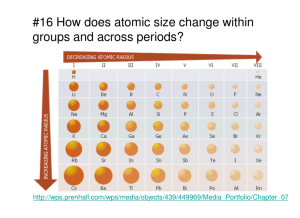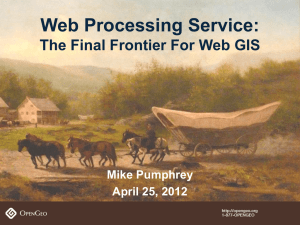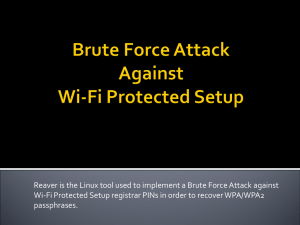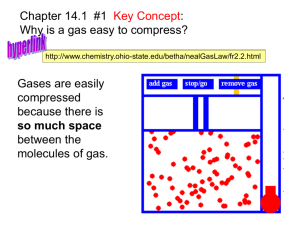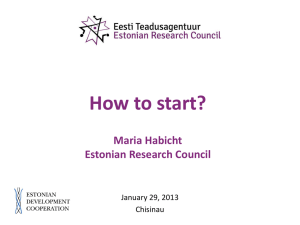View the power point
advertisement
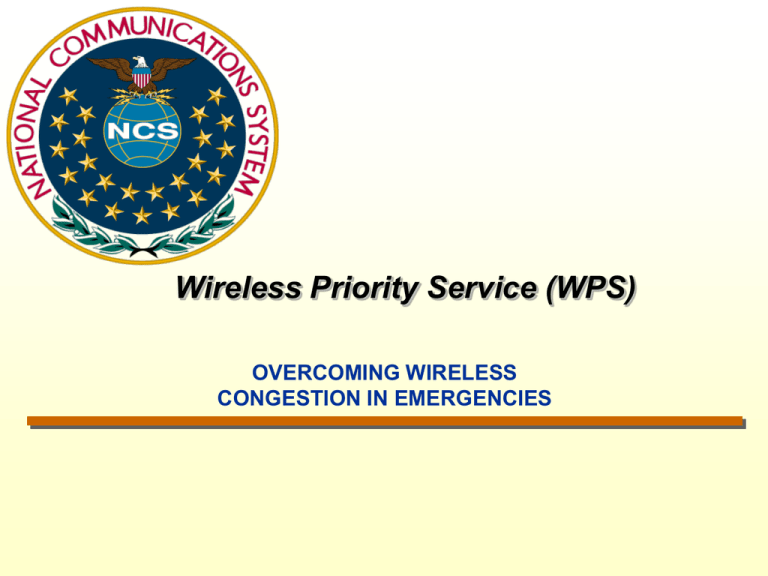
Wireless Priority Service (WPS) OVERCOMING WIRELESS CONGESTION IN EMERGENCIES Outline • The Issue – Congestion • What is WPS? • Why do you need WPS? • How do you use WPS? • How much does WPS cost? • Who is eligible for WPS? • How do you order WPS? • Satellite backup • Contact information 2 The FUNDAMENTAL Issue: Network Congestion Congestion, at one of many points, can block a call ! Local Exchange Networks AT&T MCI SPRINT Local Exchange Networks Mobile Switch Mobile Switch Government Emergency Telecommunications Service addresses wireline congestion Wireless Priority Service addresses wireless congestion at call origination and call termination 3 What is WPS? • An enhancement to basic wireless service that allows your National Security/Emergency Preparedness (NS/EP) calls to queue for priority service in order to complete the call • WPS dramatically improves “end-to-end” call completion during emergencies 4 Why Do You Need WPS? • Disasters, terrorist attacks, and major accidents trigger tremendous telephone traffic in the landline and wireless networks • NS/EP personnel at all levels of government compete with the public for these congested landline and wireless resources • GETS provides the means to get your landline call through • WPS provides the means to get your wireless call through 5 Guidance on User Eligibility • Persons in NS/EP leadership positions and key staff • Applicable at all levels: Federal, State, and Local User Category Examples Executive Leadership/Policy President, Governors, Lt Governors, Makers City/County leaders, Cabinet officers, key senior staff Disaster Response / Military Command & Control Continuity of government and national security leadership; Emergency Operations Center (EOC) coordinators/directors Public Health, Safety, Law Enforcement Senior command levels of law enforcement, fire and public safety functions Public Services / Utilities and Public Welfare Corps Of Engineers leadership; Water/sewage/ telecomm/transportation leadership Disaster Recovery Medical resources; sheltering; infrastructure damage assessment; Disaster Field Office (DFO) 6 Typical WPS User Functions • Managing the initial response to an emergency at the local, state, regional and federal levels • Leadership of departments and agencies including key support staff • Insuring reconstruction of the basic infrastructure • Essential Continuity of Government (COG) and national security functions • Operations critical to life, property, and maintenance of law and order immediately after an event • Managing public works, utility infrastructure damage assessment, restoration efforts and transportation to accomplish emergency response activities • Managing medical resources • Managing a variety of recovery operations after the initial response • Establishing and sustaining shelters • Obtaining detailed damage assessments 7 WPS Carriers and Coverage • Available nationwide in most, if not all, service areas for these carriers: • • • • • • • AT&T Cellular South SouthernLINC Sprint/Nextel Sprint PCS T-Mobile Verizon Wireless • See “Carriers” on the WPS website (http://wps.ncs.gov) for specific coverage 8 How Do You Use WPS? • When you need to make an official call, and you encounter congestion, simply retry your call but prefix your dialed number with *272 – e.g. *272 703-555-1234 • Everything else is automatic – your call will queue for up to 30 seconds and “grab” the next available path 9 How Much Does WPS Cost? • WPS feature subscription rate: • $10.00 one-time activation fee • $4.50 monthly service fee • $.75 per minute for WPS calls (*272) • WPS minutes are not charged against your basic service • WPS charges are in addition to your commercial plan charges 10 How Do You Order WPS? • Your organization Point of Contact (POC) applies for WPS for all users within organization • WPS website: wps.ncs.gov • Telephone: 866-NCS-CALL, Select Option 2 for WPS • Upon WPS approval, POC forwards carrier account activation information to NCS • NCS orders WPS feature added to user’s basic service • If user does not already have carrier service, user acquires basic commercial service 11 The GETS Calling Card Calling cards are in widespread use and easily understood by the NS/EP User, simplifying GETS usage 0123 4567 8910 Disaster Response Team #1 GETS priority is invoked “call-by-call” US CITY EOC GETS is a "ubiquitous" service in the Public Switched Telephone Network…if you can get a DIAL TONE, you can make a GETS call 12 WPS Contact Information MAILING ADDRESS: Building 410 245 Murray Lane Washington, DC 20528-8510 WEBSITES: TELEPHONE: Information/Sign-Up • 1-866-NCS-CALL (Option 2 for WPS) Trouble Reporting (24x7) • 1-800-818-4387 E-MAIL: http://wps.ncs.gov wps@dhs.gov 13
